English Name(s) TadasanaMountain Pose Strengthens Knee, Thigh, Ankle Also known as Mountain pose, Samasthiti | Asana Type Standing Asanas Pose type Standing | |
 | ||
Sanskrit ताडासन / Tāḍāsanaसमस्थितिः / Samasthitiḥ Pronunciation [tɑːɖɑːsɐnɐ][sɐmɐst̪ʰit̪ih] Meaning tāḍa: "mountain"āsana: "posture"orsama: "upright"sthiti: "stand" dṛṣṭi (gaze) नासाग्र दृष्टि / nāsāgra dṛṣṭi (to nose) Note Consult a doctor before beginning an exercise regime Similar Uttanasana, Trikonasana, Vriksasana, Bhujangasana, Adho mukha śv | ||
Tadasana the mountain pose cure back pain with yoga
Tadasana ([tɑːɖɑːsɐnɐ]; Sanskrit: ताडासन; IAST: Tāḍāsana), Samasthiti ([sɐmɐst̪ʰit̪ih]; Sanskrit: समस्थिति; IAST: samasthitiḥ), or Mountain Pose is an asana. Depending on the Yoga lineage practised, Samasthitiḥ and Tāḍāsana may refer to the same asana or another similar asana.
Contents
- Tadasana the mountain pose cure back pain with yoga
- Yoga for height growth tadasana yoga
- Etymology
- Description
- Drishti
- Bandhas
- Variations
- Iyengar yoga
- Vinyasa Krama Yoga
- Ashtanga yoga
- Key aspects
- Effects
- Cautions
- Anatomy
- References
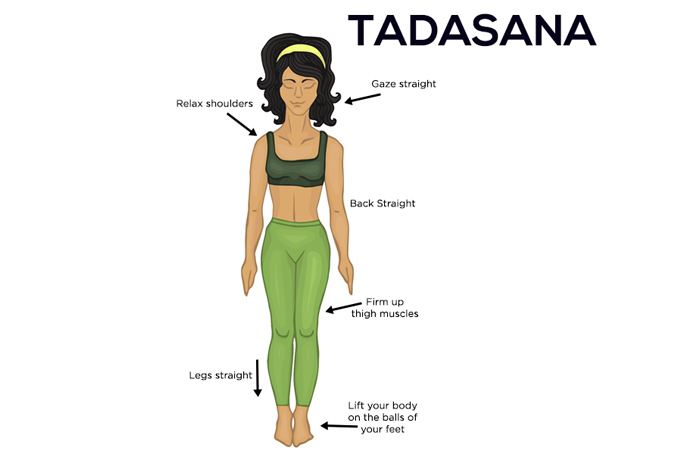
Yoga for height growth tadasana yoga
Etymology

Depending on the style of yoga, both Sanskrit names (Tāḍāsana and Samasthitiḥ) may refer to the same asana; one from the Sanskrit words tāḍa (Sanskrit: ताड meaning "mountain") and āsana (Sanskrit: आसन meaning "posture" or "seat"), and the other from sama (Sanskrit: सम meaning "upright", "straight", "equal", "level" or "balanced" ), and sthiti (Sanskrit: स्थिति meaning "stand" or "stay" ).
Description

It is the basic and the easiest of all standing asana in most forms of yoga with feet together and hands at the sides of the body. There is some contention between different styles of yoga regarding the details of the asana which results in some variations.
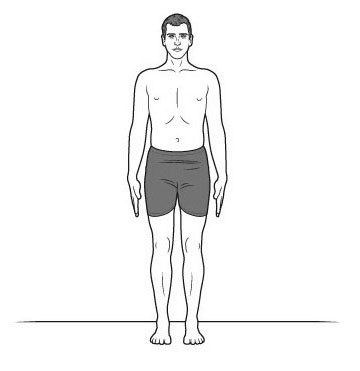
PROCEDURE:Stand with feet together. Ground down evenly through feet and lift up through the crown of your head. Lift your thighs. Lengthen up through all four sides of your waist, elongating spine. Breathe easy. Although Tāḍāsana is a very basic asana, it is the basis and starting point for many standing asanas.As such, Tāḍāsana is important in the context of other āsanas because it allows the body and consciousness to integrate the experience of the preceding āsana and prepare for the next. Further, as a common and fundamental asana, Tāḍāsana can help develop habits for further practice and asanas.
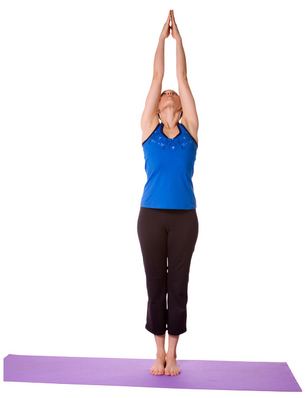
Asanas that help prepare for Tāḍāsana include Adho Mukha Svanasana and Uttanasana. Urdhva Hastasana is a very similar asana with the hands raised above the head.
Drishti
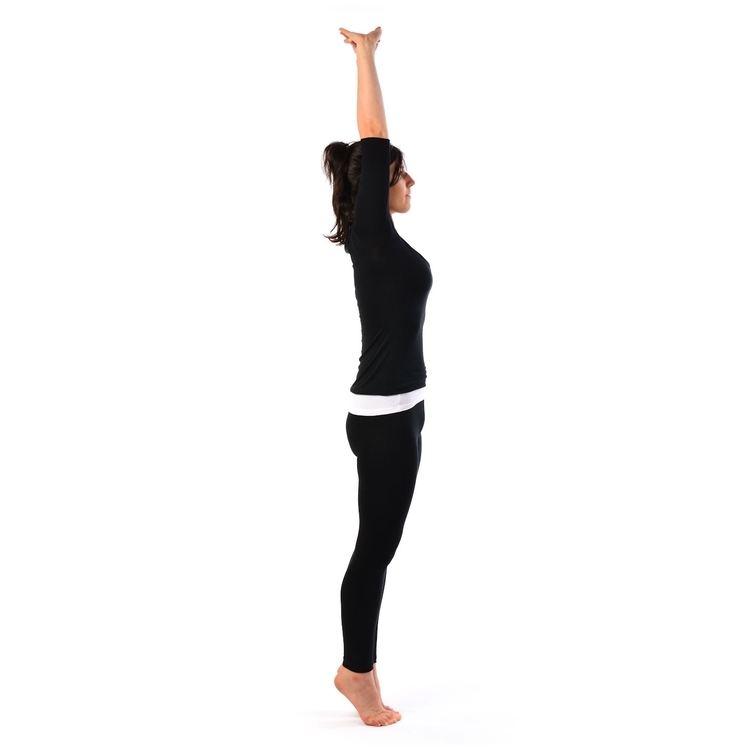
The nāsāgra dṛṣṭi (Sanskrit: नासाग्र दृष्टि) at the tip of the nose is the correct dṛṣṭi for Tāḍāsana in the Ashtanga Vinyasa method. Sushumna dṛṣṭi is encouraged to draw the awareness inward.
Bandhas
Uḍḍiyāna Bandha, Mūla Bandha and Jālandhara Bandha are all appropriate for Tāḍāsana.
Variations
Due to terminological differences, Samasthitiḥ is sometimes considered a variation of Tāḍāsana.
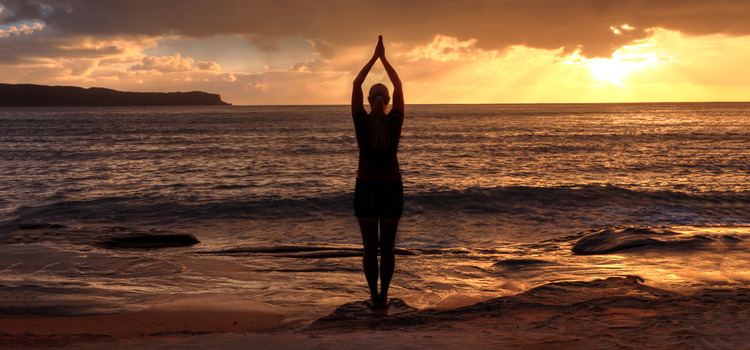
There are also asanas which stem from Tāḍāsana but are not standing asanas, such as Supta Tāḍāsana (Reclined Mountain Pose)
Iyengar yoga
In Iyengar Yoga, when performing Tāḍāsana, the arms can be raised over the head or kept at the sides of the legs. In Iyengar yoga styles, Samasthitiḥ is synonymous with Tāḍāsana.
Tāḍāsana appears in the 1st and 2nd weeks, of Iyengar's āsana courses (as detailed in Light on Yoga).
Vinyasa Krama Yoga
In the Vinyasa Krama Yoga Tāḍāsana is performed on the toes, while samasthitiḥ is flat footed. In this style of yoga the two āsanas are different.
In Vinyasa Krama Yoga, Samasthitiḥ is the centerpiece of the standing sequence and the foundation for the Hasta Vinyasas (arm vinyasas), Parsva Bhangi (side) vinyasas, Uttanasana (forward bending) vinyasas, and squatting/hip stretching asanas.
In the Vinyasa Krama Yoga standing sequence, the final asana of the series (before śavāsana) is Tāḍāsana, performed on the toes.
Ashtanga yoga
In Ashtanga Vinyasa Yoga, Tāḍāsana is the beginning and ending asana in the Sūrya Namaskāra sequence which is used to warm up the body and is sometimes interspersed throughout the entirety of all Ashtanga Series if performed with full vinayasas, in addition to being a foundational pose for all standing poses.
Key aspects
Key aspects of Tāḍāsana are:
As with most yoga asana, when entering an asana, distal body parts are best arranged first, progressively adjusting inwards and putting proximal body parts in place last.
Effects
The asana strengthens the abdomen and the legs. It may help relieve sciatica, reduce flat feet, and help plantar fasciitis and heel spurs by improving the strength of deeper foot muscles which support your foot, and reducing the load on the less suited plantar fascia.
Cautions
Anatomy
Parts of the body which play an important role in performing this asana are: both the intrinsic and extrinsic muscles of the feet, the quadriceps, the iliopsoas muscles, the piriformis, abdominal wall, and the diaphragm.
The position of the body can be described anatomically as:
If the hands are raised over the head, palms together, (as per the variation) this stretches the thoracic cavity and rib structures including the intercostal muscles and expands the thoracic cavity increasing lung capacity. A slight back bend could be included to accentuate the effect and stretch the front of the body, chest and ribs more.
